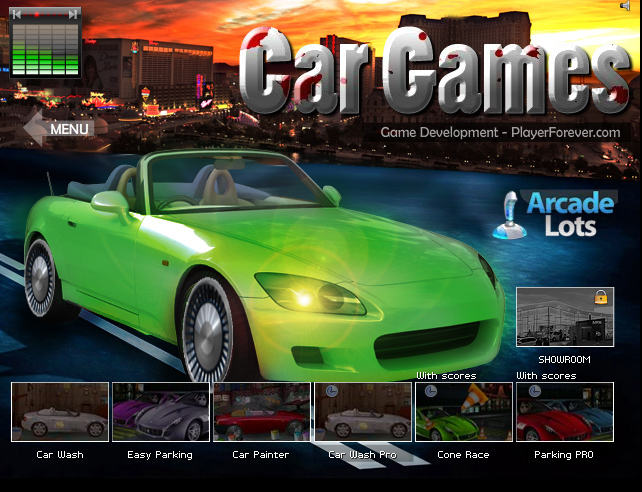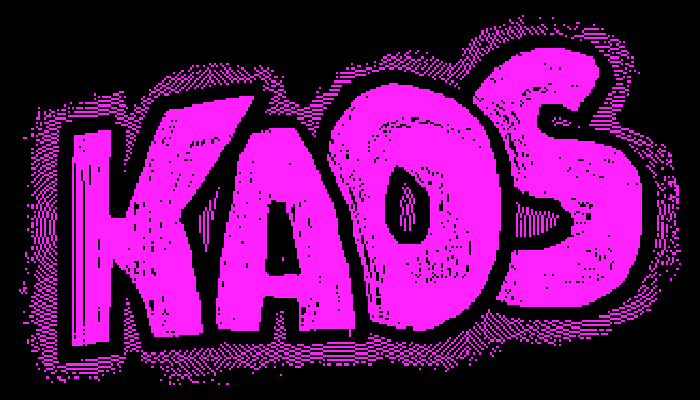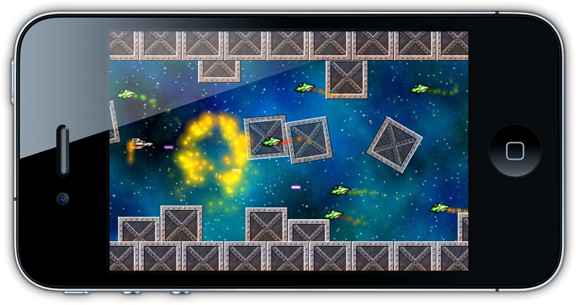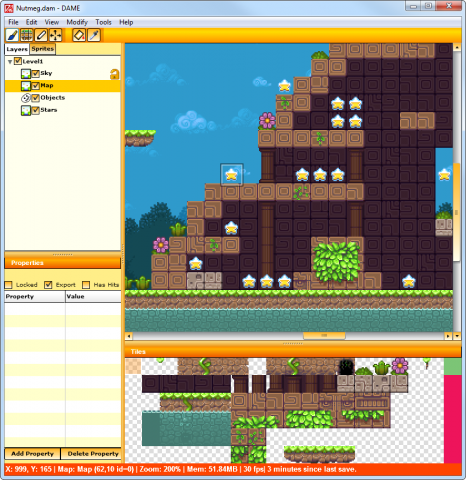Game Development Category
-
MojoCreatives talk about the making of Car Games in Flash
6th Dec 20112The “car” and “racing” genre is heavily catered for in the Flash gaming space. But it’s also large enough that there are companies dedicated just to producing these sorts of games. MojoCreatives is one such company and in this short interview I caught up with their CEO Michael Ojo about this unique space in the gaming spectrum:

What got you into car games?
“I got into the whole online gaming gig back in 2007. It was just something I stumbled upon really. I had enjoyed playing Flash games online and figured why not make my own? I’m a total car / auto fanatic. And racing games are my favourite genre, so it made sense that I would try to make a game like this. I’m not a developer myself. I create the game idea, concepts and design style. We then use either our in-house coders or work with other studios such as IriySoft. My first game was called Crazy Mustang and was finished in December 2008. It was extremely popular with plays now in the tens of millions. Since then we’ve released another 11 car games.”
How do monetise your games?
“All our games are free to play but carry ads. We release them on our own sites (like ArcadeLot.com) and of course we’ll upload to the popular portals like Newgrounds and Kongregate. That alone helps the game get a decent exposure. And after this we’ll reach out to the top gaming portal owners. This is sometimes a daunting (and time consuming) process, but if your game is good it’s worth it in the long run. Right now we are gearing up to release at least one new game every month and some will be accompanied by mobile versions.”
What goes into making a car game?
-
The reality of developing web games with Flash, HTML5 and Unity
10th Nov 2011
Update: Lots of new links added at the bottom and feedback from comments inserted into the article body.
Today was a black day for Flash developers world-wide. Adobe announced it will drop Flash support for mobile browsers. This came the day after announcing mass redundancies across the company. On the face of it that doesn’t seem like a significant problem. But it has got the whole “Flash hate wagon” on the roll again, so I felt it was time to finally commit my thoughts to this blog.
First of all: I am only concerned about game development for the web. This entire article focuses on this specific topic and this topic alone. This is not a “Flash vs. HTML5” article. It’s not an article about building native apps for mobile. It’s entirely and utterly about the reality of making web games today.
I compare Flash, HTML5 and Unity, as they are the only viable web gaming platforms today. For each of them I cover 10 topics:
- Workflow – How easy is it to actually create a game?
- Platform Stability – Will things change between the time you start and finish your game?
- Backward Support – Will your game still run 10 years down the line?
- Mobile – Will your game run at all?!
- Distribution – There’s no point making something no-one will play
- Security – Code and IP protection
- Monetization – All about making games to make money
- Facebook – The social gaming angle
- How many people will play your game?
- 3D Support – Stage3D vs. WebGL vs. Unity
These are all areas that I feel game developers ought to be aware of when evaluating new platforms. I conclude this with my advice to Flash game developers both new and seasoned.
It’s a long read but it was vital I covered as much as I could, using facts and stats rather than hyperbole, so you can make the best informed decision possible.
-
ExPlay 11 – Zombies, Sheep and lots of great people!
6th Nov 2011
I had the pleasure of visiting the Extended Play conference down in Plymouth (UK) on Friday. Sponsored by a host of great companies and organisations, it was a 3-day affair mixing up a series of talks, panels and keynotes running alongside a 2-day game jam and technology boot camp. Although I was only able to stay for the Friday I still packed in a huge amount. It was a pleasure to meet and chat to a number of industry professionals I respect.
Our Creative Director, Dan Efergan, kicked off the Friday session with his “Sex, Lies and Videogames” talk – in which we got to show-off some neat Home Sheep Home 2 footage, concept art, grey boxes and stats. On the floor above this the game jam was kicking off. The theme of the jam was “colour” and there were pods of super-talented devs and artists huddled around their Mac Books crafting some great looking games. I got to play a couple and hopefully they’ll all be online shortly.
Downstairs was the Plimitron: ExPlays own Winnitron, although somehow the main Winnitron button had been mapped to the “ESC” key by mistake, which meant most the Flash games died a horrible death when it was pressed 🙂 Still it was fun to see 2-player Canabalt all the same, albeit briefly.
James Brooksby from DoubleSix Games gave an interesting talk on their zombie shooter games including the new All Zombies Must Die! It was fascinating to see his graphs showing the dramatic peak in sales just over the halloween period. Plus the number of different avenues they had experimented with – such as DLC packs, PS Home items, firesale weekends and promos. The range of virtual items they created from just one game was impressive and all of them helped bring in a little bit more cash to their coffers.
-
App Game Kit – Write Once, Deploy Everywhere
15th Aug 2011Being able to code your game once and then deploy it to a variety of devices has been a programming holy grail for as long as I can remember. When you factor in the huge range of mobile devices on the market today, there must be a massive amount of time spent by devs porting from one platform to another. So I have been following the progress of the App Game Kit (AGK) with interest, especially as this is the very issue it claims to solve.
Created by The Game Creators, a team perhaps better known for development tools like DarkBASIC and their hit iPhone games, AGK was created to solve an internal development issue: basically they were fed-up re-coding for each new device. So AGK was born. It comes in two versions – a BASIC interpreter with game and media specific commands (like LoadImage and CreateSprite) and for seasoned developers there’s a set of C++ libraries to use. Games are automatically scaled to different screen resolutions, and issues such as input commands differing from device to device are abstracted away from you.
According to the press release AGK supports iOS, Mac OS, Windows, Samsung Bada and MeeGo from the get-go. Which means you can target App Store, Mac Store, Samsung Apps and Intel’s App Up Store. Phase 2 of the product will add Android, Windows Mobile 7, Blackberry and WebOS to the mix. I don’t have any technical details on what happens “under the hood” just yet. I.e. is the BASIC code compiled down into a native runtime, or run via some kind of vm or interpreter. I also can’t comment on actual performance once your app hits the device, but the videos TGC have posted to YouTube looked fine as do the game examples, although I admit they are very simple.
It’ll be interesting to see how this one evolves. If you make anything with it, let me know!
More info at the AGK web site: http://www.appgamekit.com/
-
DAME 2 Released – My Favourite Game Map Editor!
2nd Jun 2011 Although I’ve been beta testing this for a while now, Charles Goatley today officially released DAME 2. I first started using DAME back in September 2010 when the first version was released on the Flixel forums, and it has gone from strength to strength since then. Charles has done a wonderful job keeping on-top of bug reports and dealing with feature requests, and v2 is easily the single biggest update yet.
Although I’ve been beta testing this for a while now, Charles Goatley today officially released DAME 2. I first started using DAME back in September 2010 when the first version was released on the Flixel forums, and it has gone from strength to strength since then. Charles has done a wonderful job keeping on-top of bug reports and dealing with feature requests, and v2 is easily the single biggest update yet.DAME is a traditional 2D Tile Map Editor running on Adobe AIR, which means it works across Windows, Mac and Linux. The map editing view is generated with Flixel, so if you use it for a Flixel game you know it’s going to look exactly the same as it does in the editor. It has a comprehensive export system and custom scripts can be written in Lua. From simple CSV or XML data to writing out fully blown AS3 classes.
Version 2 brings interface refinements and a lot of new map building tools to the table, including:
- Certain windows (tile palette, sprites, layers and properties windows) are now dockable.
- Isometric tilemap support – support for diamond, staggered diamond and skewed. Tile matrix and brushes all still work as expected with these layer types.
- Tiles can be stacked on top of each other.
- Improved visuals for selected tiles.
- Improvements to drawing on tilemaps.
- Can draw lines on tilemaps.
- Flood fill for tilemaps.
- Can select, move and scale regions in tile drawing mode.
- Can copy and paste in tile drawing mode.
- Right click when drawing brings up context menu.
- New configurable 16 colour palette for drawing.
- Tiles can be animated.
- Can have per tile properties.
- Can repeat tilemaps on individual axes.
- Can use any system font for text boxes.
- Can use bitmap fonts for text boxes.
- Increased undo history.
- New Sprite Trails – automatically populate a path with a series of sprites.
- Sprites can be automatically sorted for depth.
- Sprites can use a Z value for height placement.
- All object layers can be aligned with an isometric tilemap layer to allow exported positions to be relative to the tilemap’s ‘real’ coordinate system.
- Aligned shapes on shape layers will rotate/skew to fit the tilemap shapes.
- Can change the frame for any sprite to be different from the sprite entry.
- Tile sprites are now spritesheets – can scale and translate the image within.
- Can rip an image to create a tilemap layer and tileset.
- Choice of themes for DAME.
- Importing dam projects with sprites improved to find pre-existing matches in current project.
- Can save sprite entry lists separate to a .dam project as a .dsf (DAME Sprite File), allowing you to have multiple sharing one list of sprites.
- Can move an entire group in real-time.
- More of the session is saved in a .dam file allowing you to resume editing where you left off much easier.
- Tiles now preview in tilemap layer properties window.
- Can gives shapes different colours.
DAME isn’t just for Flixel. There are FlashPunk exporters included, and the CSV/XML export makes it easy to use in languages other than AS3. I create all my game maps with this program and look forward to making even more with v2.
Download from http://dambots.com/dame-editor/
Hire Us
All about Photon Storm and our
HTML5 game development services
Recent Posts
OurGames
Filter our Content
- ActionScript3
- Art
- Cool Links
- Demoscene
- Flash Game Dev Tips
- Game Development
- Gaming
- Geek Shopping
- HTML5
- In the Media
- Phaser
- Phaser 3
- Projects
Brain Food






